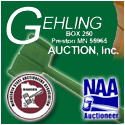 |
 |

|
|
|
Illinois Ag News Headlines |
 |
Growing Herbs in Containers
Illinois Ag Connection - 06/15/2018
Got a green thumb but inadequate space or sun for an in-ground garden? Container-grown herbs may be the answer, according to University of Illinois Extension horticulture educator Kari Houle. With the right size container and appropriate potting mix, she says, anyone can grow an herb garden.
"When I was renting apartments in college and graduate school, I didn't have the option to have an in-ground garden. Therefore, I used containers to grow my herbs and vegetables. It's also an easy way to get started with gardening if you've never tried it before. Small-scale growing in containers makes things seem less overwhelming than a huge herb garden," Houle says.
Some herbs, such as mint, are actually better to grow in a container, due to their aggressive tendencies. But it's possible to take a hybrid approach, growing the mint in a container and sinking the whole thing in the ground. That will help control the root system and contain spread. Houle says, "Mint, aka The Mint Monster, can quickly take over if it's allowed to run rampant and go rogue. Make sure to keep it under control if you do place it in the ground."
When selecting containers in which to grow your herbs, select ones that have drainage holes and that are also large enough to accommodate a fully grown herb plant. Containers without drainage holes lead to a higher chance of overly moist soil and root rot. If you do fall in love with a container without a drainage hole and it's not possible to make one, you can use it as a cachepot: a cover for the real container the plant is growing in. Houle suggests taking the inner pot out to water and allow to drain before putting it back in the decorative container.
"When selecting potting mix, don't use topsoil as it's too heavy," Houle says. "Select a nice quality potting mix instead."
These potting mixes are a blend of soil-free materials and are lightweight, making them perfect for use in containers. Often people will ask if they can reuse the potting mix year after year and the answer is mostly yes. If there were no disease issues the previous year, you can reuse the mix, but you may need to add additional nutrients to replace what was lost. You may need to add some new potting mix each year, but eventually it will all need to be replaced.
When deciding whether to start from seeds or buy plants, some are easier to start from seed than others. Herbs such as basil, parsley, chives, sage, cilantro, and dill are all easy to grow from seed, but it's easier to purchase already-started lavender, mint, and rosemary plants. When selecting plants, make sure they are healthy and free of any evidence of insects or diseases and choose those herbs that you know you are going to use in the kitchen.
"As for when your herb plant is ready for harvest, it depends on the plant. You want to make sure they have enough growth on them that you won't shock them by removing plant material and also never harvest more than 1/3 of the plant at a time. The best time of day to harvest herbs is early morning after the dew has disappeared and before the heat sets in." If you want to use fresh herbs in your cooking instead of dried, it's a 3 to 1 ratio of fresh herbs to dried herbs. If the recipe calls for 1 teaspoon of dried herbs, you would use 1 tablespoon of finely chopped fresh herbs.
|
 |


|
 |
|
Copyright © 2024 - Farms.com. All Rights Reserved. |
 |
|